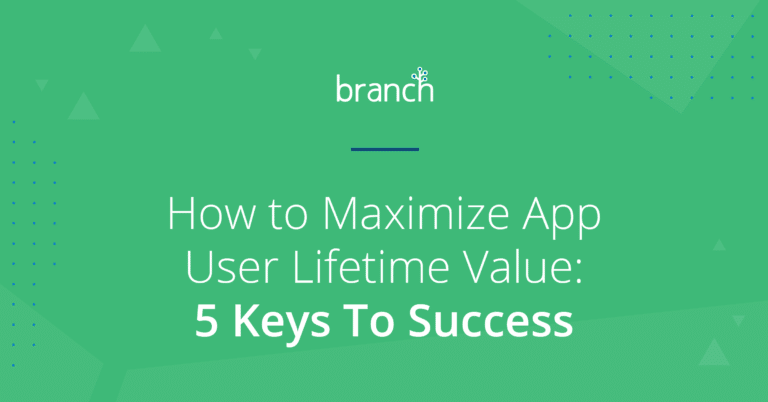Mobile marketers face many challenges in today’s increasingly fragmented and ever-evolving digital ecosystem.
One challenge always on the mind of marketers: LTV.
48% of app marketers say their leading marketing challenge is that app installs don’t translate into high Lifetime Value (LTV) users, according to Statista.
What is LTV?
Lifetime value, or LTV, is the measure of an individual user, client, or customer’s worth to a business from the moment they start using the product or service to the moment they churn – i.e. over their entire life cycle.
Why Can’t I Just Measure ARPU?
While Average Revenue Per User (ARPU) is a helpful metric in assessing the ROI of your user acquisition campaigns, it doesn’t paint the full picture of your app’s health – or your users’ life cycle.
LTV provides a more holistic metric to base user acquisition strategy decisions on than ARPU alone. This is because it also incorporates how often users churn, and how often your app content is shared.
LTV has three drivers: monetization, retention, and virality:
- Monetization: This refers to the amount of money customers spend in your app over their lifetime. Monetization includes ARPU as well as ARPDAU (Average Revenue Per Daily Active User) and ARPPU (Average Revenue Per Paying User – common in gaming apps).
- Retention Rate: The percentage of users that come back to your app over a specific period of time (e.g., one day, one week, one month). This also includes engagement, or how much time users spend in your app.
- Virality: The shareability of your app – how many additional (free) users each user brings in (also often measured over a specific period of time). Every company has a slightly different equation for LTV, but they all include variables from these macro-categories.
While there is no industry-standard formula for LTV that everyone sticks to, they all rely on post-install data pertaining to these three components. Essentially, LTV=ƒ(Monetization, Retention, Virality).
For consistent reporting, you (or your data science team) should pick one formula for your organization. Here is one common example:
LTV = ARPU x (1/churn)
Where churn = 1 – retention rate
The duration of time you use for this calculation depends on when incremental revenue flatlines, though 360 days is common. This metric is key to making wise user acquisition decisions that drive mobile growth and revenue.
The Current LTV Landscape: The App Power Law
According to Comscore, smartphone users’ top 5 apps account for 88% of their total time spent in apps. This means you’re competing against apps like Facebook and Instagram for user attention. So, what can you do to increase user engagement and retention, and maximize the lifetime value of your app users?
Let’s look at a few strategies to boost monetization, retention, and virality – which all lead to increased app user LTV.
5 Strategies for Increasing LTV in 2019:
1. Leverage Deep Linking
With a deep linking strategy in place, you can route users directly to in-app content – even through install. App users convert 3x better than mobile web users. So to maximize app user LTV, use deep links to seamlessly drive users into your app where they are more engaged.
Here’s an example of how deep links work on mobile:
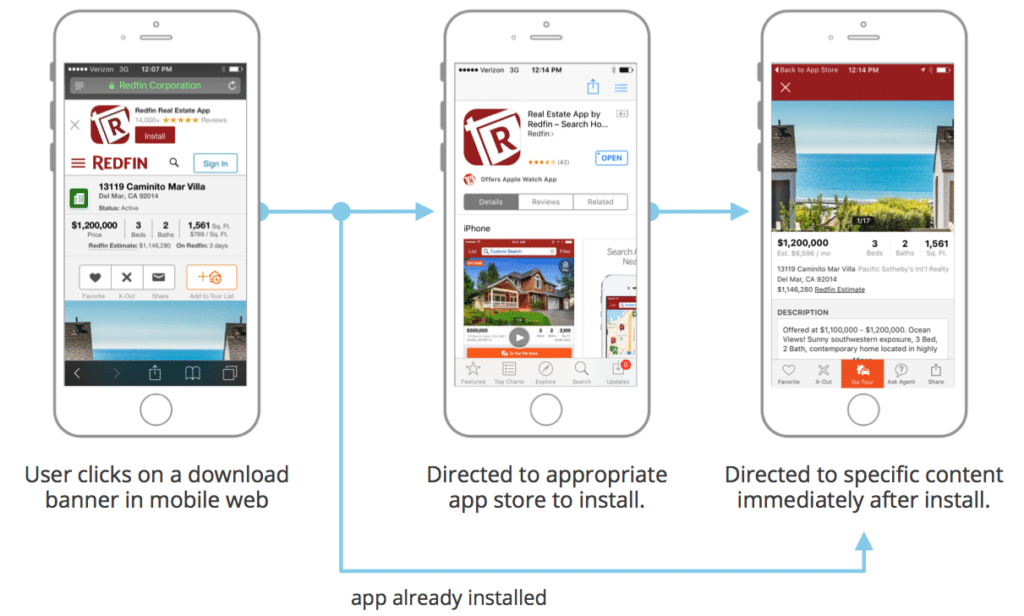
Learn more about Branch Deep Links here.
2. Encourage Social Sharing
Enabling social sharing positively influences virality as well as retention. This is due to the fact that app users are likely to use – and keep using – an app their friends are using. Integrate sharing options into your app so users can easily share content, increased engagement, new users, and higher LTV.
Airbnb does this extremely well. Take a look at this example, in which someone finds an Airbnb experience in Palm Springs and shares the content with a friend via SMS message.
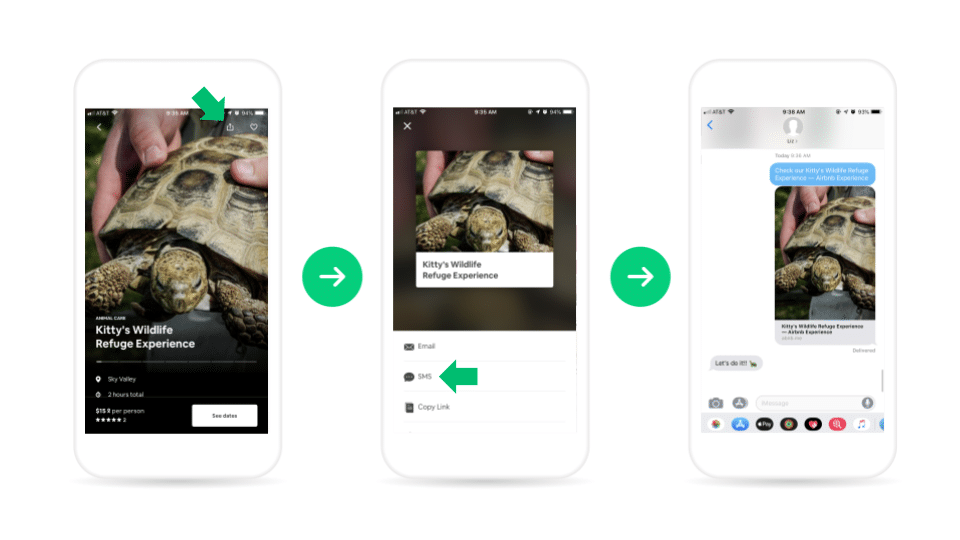
What makes this user experience so great is that the recipient of this message will be deep linked directly to that content within the Airbnb app. If they don’t have the app installed, they’ll be taken to the app store to install and the context of their click will be preserved, routing them to the correct in-app content after first launch.
3. Drive New Referrals and Offer Discounts
Discounts positively affect both monetization (ARPU) and retention to boost LTV. Discounts encourage existing users to return to your app and give them extra incentive to convert. Referrals are a low-effort, low-investment way to generate new users, bringing down the cost of user acquisition as your customers are doing the work for you.
Here’s an example of an app referral flow where a new user receives a referral via SMS, clicks through to the app, and is automatically rewarded with the promotion:
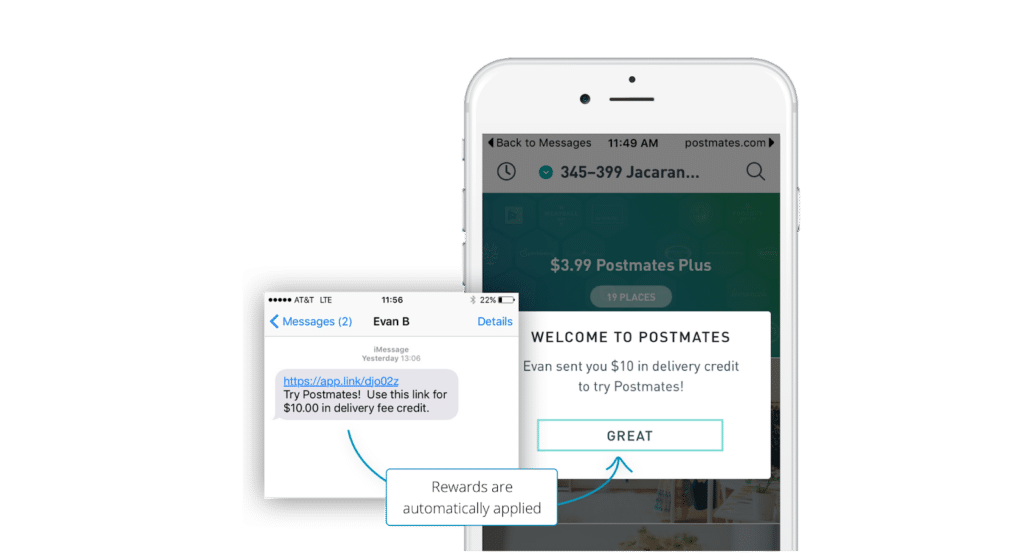
Talk about referrals done right.
Ready to steal this strategy for your own app? Learn how to build a deep linked app referral program with Branch, where rewards are automatically applied and new and existing users see personalized experiences without the need for promo codes.
4. Prioritize User Re-Engagement
Re-engaging users and driving them seamlessly back to the app through smart banners, email campaigns, and retargeting ads are all great ways to boost the user retention portion of the LTV formula. By implementing deep links in all of these channels, you can remove unnecessary steps from the user’s journey to conversion.
Here is an example of a deep linked email which routes the user directly to the correct in-app content upon click:
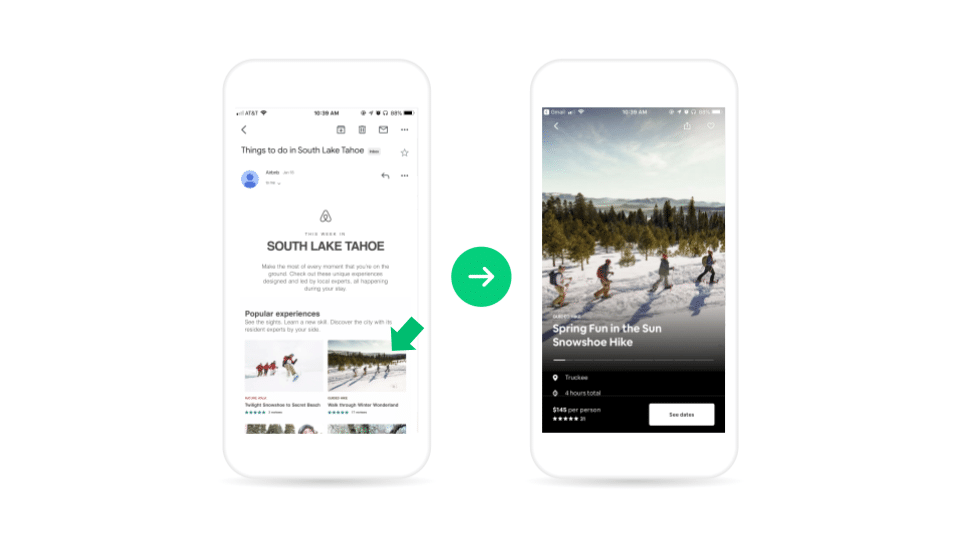
Learn more about how to implement deep links in your email marketing strategy with Branch’s Universal Email.
5. Get Push Notifications Right
Push notifications help lift LTV by increasing engagement and retention. Recency and frequency of communications from an app encourage users to re-engage and ultimately convert. But be careful to not overdo it, and be sure to personalize your messages – otherwise, you could see your push notifications having the opposite effect on users.
Here’s an example of a deep linked push notification, courtesy of CleverTap:
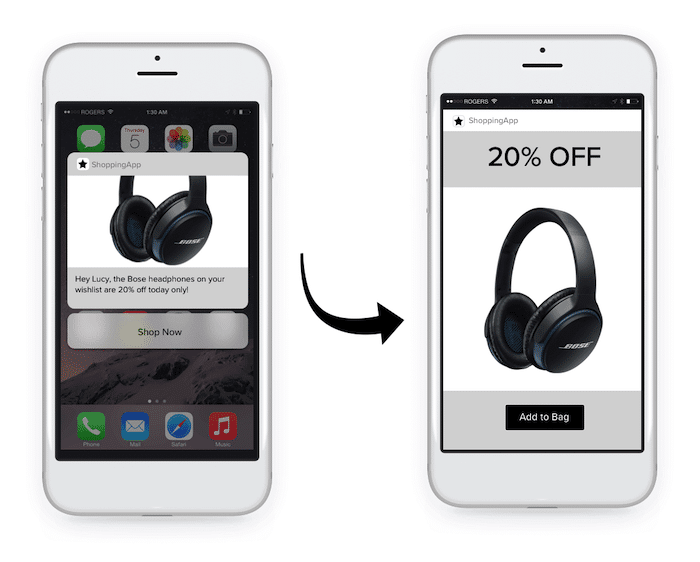
While the Branch platform does not actually send push notifications, you can add Branch links to your push notifications to get the benefit of deep linking and attribution.
Measure and Optimize Results
Once you’ve implemented the above strategies, determine which users have the greatest LTV and which sources they came from. You can determine this using Branch’s cohort analysis tool, which allows you to compare the lifetime value of your customers based on common characteristics or lifecycle stages. Leverage these insights to shift budget to the channels and marketing campaigns that bring in the highest-quality users – or users with the greatest LTV – to optimize your user acquisition strategy and maximize overall app user lifetime value.
Ready to maximize the LTV of your app users with Branch? Contact the sales team today.






















